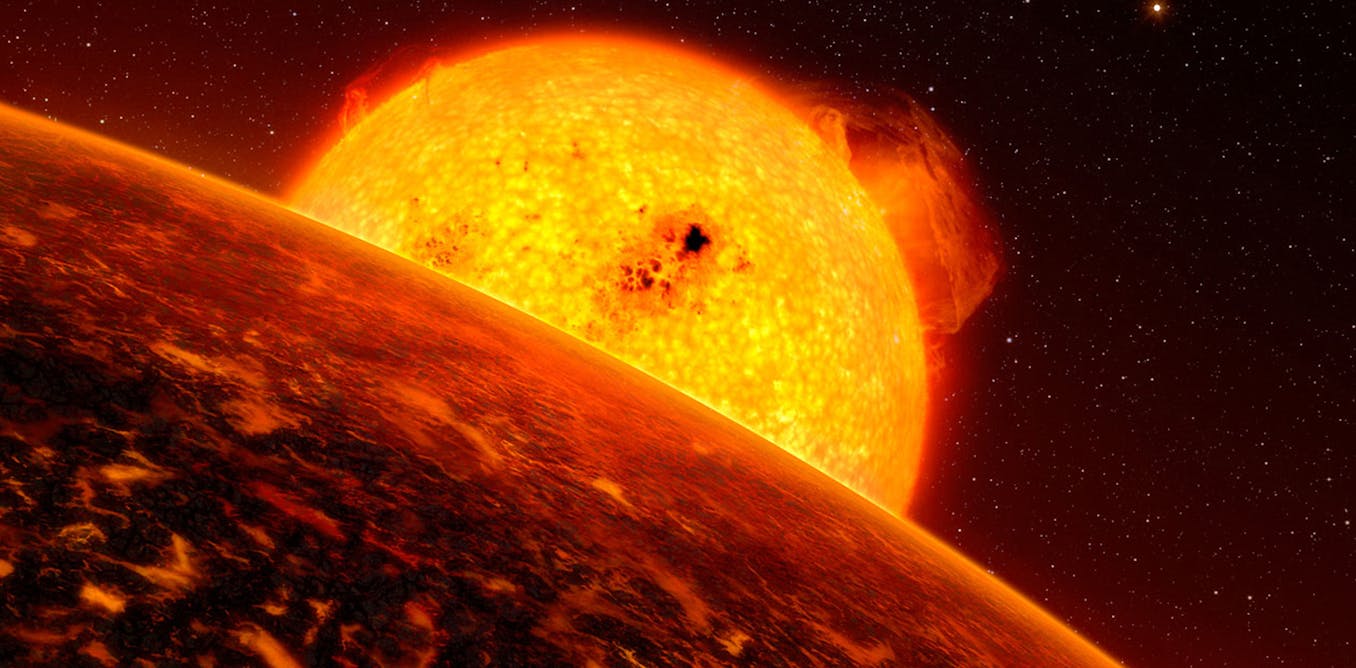
Uk satellite twinkle will reveal atmospheres of distant exoplanets
- Select a language for the TTS:
- UK English Female
- UK English Male
- US English Female
- US English Male
- Australian Female
- Australian Male
- Language selected: (auto detect) - EN
Play all audios:

NASA’s recent discovery of 12 more exoplanets, including the most Earth-like yet, brings the number of exoplanets – those outside our solar system – discovered to nearly 2,000. It’s now
thought that almost every star has a planetary system, with Earth just one of several billion planets in our galaxy alone. Many of the exoplanets we’ve found are quite different to those in
our solar system: “hot-Jupiters” are giant planets orbiting very close to their star, while “super-Earths” are rocky planets up to ten times the mass of Earth. The newly discovered
Kepler-452b is the first exoplanet that is relatively similar to Earth in size and within the habitable zone around its star – not too hot and not too cold – that might be able to support
life. But really we know very little about these alien worlds beyond their mass, density and distance from their star. What are they made of? How did they form? What’s the weather like
there? Our small and fast-track satellite observatory dedicated to studying exoplanets, Twinkle, aims to answer these questions. It’s a huge challenge, since exoplanets are so far away. Most
have been detected only indirectly – by a star’s dip in brightness as a planet passes in front of it, or by looking for a wobble in a star’s position caused by an orbiting planet’s
gravitational tug. A very few have been imaged directly but, due to their enormous distance from Earth, they are no more than pinpricks of light. However, even a tiny amount of light can
reveal a huge amount of information. In recent years, we have pioneered techniques to extract information about exoplanets from starlight filtered through their atmospheres as they pass in
front of their star. IT’S ALL IN THE WAVES Spectroscopy allows us to split light – in this sense, the entire electromagnetic spectrum, not just that visible to the human eye – into a
“rainbow” of its constituent parts so it can be examined in detail. Molecules formed from the periodic table’s elements absorb specific wavelengths from the electromagnetic spectrum, leaving
a unique pattern of lines, a bit like a barcode. By detecting and separating out these barcodes we can identify the tell-tale footprints of the elements present, and therefore which gases
the exoplanets’ atmospheres contain. The composition of an exoplanet’s atmosphere can reveal whether a planet formed in its current orbit, or whether it migrated from a different part of its
planetary system. The evolution, chemistry and physical processes driving an exoplanet’s atmosphere are strongly affected by the distance from its parent star. The loss of lighter
molecules, impacts with other bodies such as comets or asteroids, volcanic activity, or even life can significantly alter the composition of primordial atmospheres. So a planet’s atmospheric
composition traces its history, and gives an indication as to whether it might be habitable – or even host life. EYES IN THE SKY However, aside from the Hubble and Spitzer space telescopes,
both nearing the end of their lives, there is currently a gap in facilities suitable for studying, rather than finding, exoplanets. Space missions such as ARIEL, a European candidate
mission competing for launch in 2026, won’t be available for a decade or more. Upcoming general observatories, like the James Webb space telescope or E-ELT may have some of the capabilities
needed, but time available on these for exoplanet research will be limited. This is what led us to develop Twinkle: a small, relatively low-cost at £50m commercial mission dedicated to
studying exoplanets. The Twinkle satellite will be built in the UK using a platform designed by Surrey Satellite Technology Ltd and instrumentation led by UCL. PUTTING A LOW COST APPROACH TO
WORK FOR SCIENCE IN SPACE From a vantage point in orbit 700km above the Earth, Twinkle will observe more than 100 planets orbiting distant stars, its instruments analysing light in the
visible and near-infrared wavelengths (from 0.5 to 5 micrometers). It will be able to detect a range of molecules including water vapour, carbon dioxide and exotic metallic compounds, and
organic molecules such as methane, acetylene and ethane. It will also be sensitive to precursors to amino acids – the building blocks of life – such as ammonia and hydrogen cyanide. By
measuring the visible light reflected by an exoplanet and the infrared heat that it emits, Twinkle will work out the planet’s energy balance, its temperature and whether clouds are present
or absent in the atmosphere. For very large planets orbiting very bright stars, Twinkle will even be able to obtain 2-D maps of temperature and clouds. With repeated observations over the
five-year lifetime of the mission, this will tell us about climate and weather on those planets. As an independent endeavour funded through a mixture of private and public sources, Twinkle
is pioneering a new model for astronomy missions. The spacecraft’s structure will be a platform developed for high-resolution Earth imaging, while the instruments will use off-the-shelf
components and reuse existing software to bring down costs and increase reliability. With studies already underway, the instruments should be completed by the end of this year, the aim being
to launch in 2019. The consortium includes more than 15 UK research institutions and companies so far and continues to grow – hopefully kickstarting a new era of exoplanet science, but also
demonstrating the feasibility of small, nimble and cost-effective science projects.
